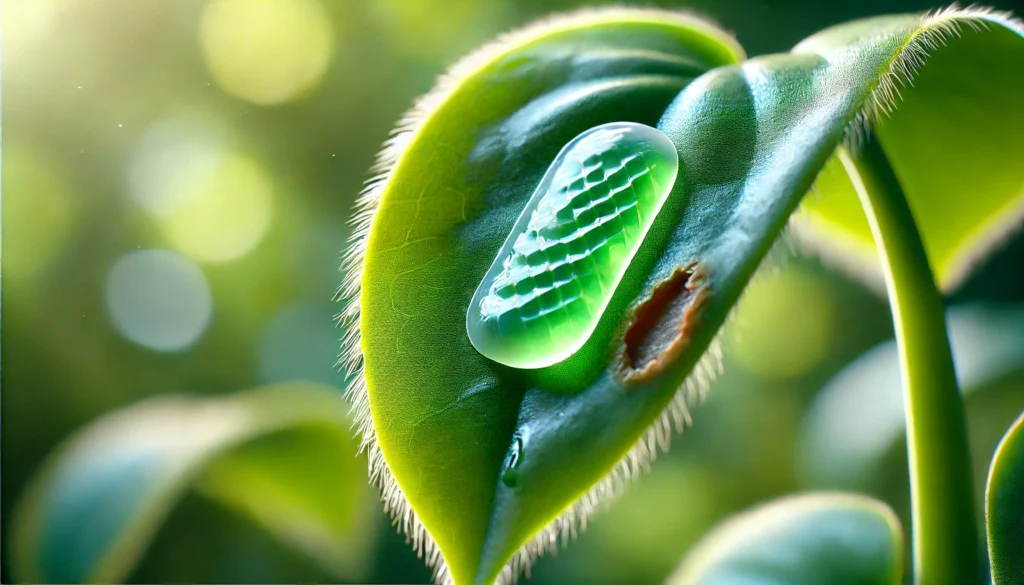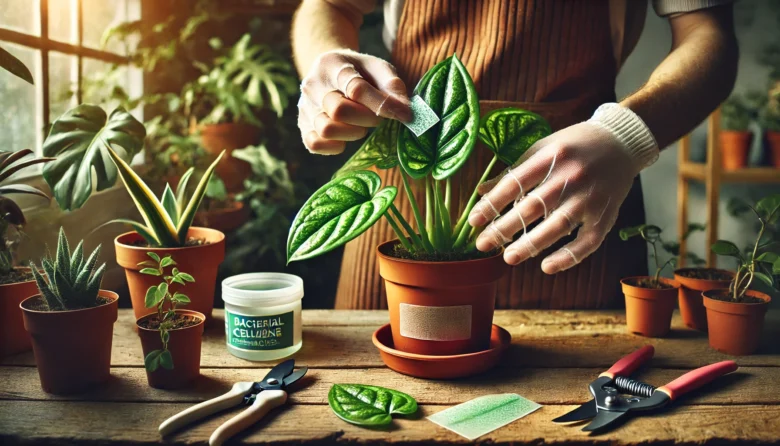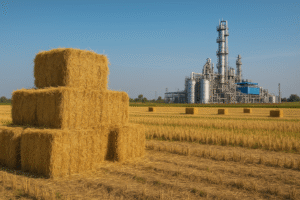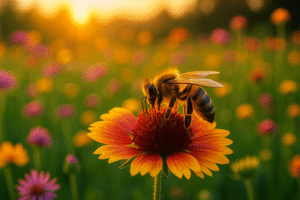Fun Fact: Did you know that bacteria can produce a material strong enough to heal plants and help them grow? Scientists have found a way to turn bacterial cellulose into a plant bandage, offering a revolutionary way to support plant recovery and propagation.
Introduction
Imagine a world where farmers and gardeners no longer worry about plant wounds caused by pruning, grafting, or environmental stress. Thanks to bacterial cellulose, a natural polymer produced by bacteria, researchers have discovered a bacteria-made band-aid for plants. This groundbreaking research, recently published in Science Advances, demonstrates how bacterial cellulose patches could transform plant care and agricultural practices.
The Science Behind Bacterial Cellulose
Bacterial cellulose is a natural biopolymer produced by bacteria like Komagataeibacter xylinus (formerly Acetobacter xylinum). Unlike plant-derived cellulose, bacterial cellulose is purer, highly absorbent, and structurally strong. These properties make it widely used in wound dressings, medical implants, and even the food industry. Researchers have now explored its potential for plants, leading to promising results.

How Does It Work?
In the study conducted by Núria Sánchez Coll at the Centre for Research in Agricultural Genomics in Barcelona, scientists experimented with bacterial cellulose patches on plant wounds. They applied the patches to small cuts on lab plants’ leaves and compared them with untreated wounds.
The results were astonishing:
- More than 80% of treated wounds healed within a week.
- Untreated wounds had a healing rate of less than 20%.
- The patches helped plants regenerate faster and improved vegetative propagation.
These findings suggest that bacterial cellulose can play a major role in plant recovery, especially in agriculture, gardening, and plant research.
Potential Applications in Agriculture and Gardening
The practical applications of this discovery could transform how we care for plants. Some key areas where bacterial cellulose patches could be beneficial include:
Grafting and Cloning
Grafting is a common technique in fruit orchards and commercial nurseries. Currently, plastic wraps and synthetic tapes are used to hold grafts together. However, these materials can trap moisture, encouraging infections. Bacterial cellulose bandages could offer a natural, biodegradable alternative, promoting faster and healthier graft healing.
Plant Wound Care
Plants often suffer from accidental cuts, pest attacks, or harsh weather conditions. Farmers and home gardeners struggle with infection-prone plant wounds. By applying bacterial cellulose patches, plants can recover faster and resist infections better.
Conservation of Rare and Endangered Plants
Many endangered plant species require special care to thrive. By using bacterial cellulose patches, conservationists can protect fragile plant species, ensuring their survival in controlled environments.
Hydroponics and Tissue Culture
In hydroponics (soil-less farming) and tissue culture labs, bacterial cellulose could serve as an ideal growth medium, supporting healthy root development and plant propagation.
How Bacterial Cellulose is Already Helping Humans
Bacterial cellulose has already transformed healthcare. In human medicine, it is used for:
- Burn wound dressings (widely used for its moisture-retaining and healing properties).
- Artificial skin substitutes for medical treatments.
- Drug delivery systems, helping in slow-release medication therapies.
Its application in plant care further emphasizes its biocompatibility and sustainability.
Challenges and Future Prospects
Although bacterial cellulose patches have immense potential, several hurdles must be overcome for widespread adoption:
- Cost of large-scale production: Since bacterial cellulose is mainly produced in labs, scaling it up for agricultural use might be expensive.
- Environmental conditions: More studies are needed to test how these patches perform in different climates and soil types.
- Regulatory approvals: Agricultural innovations often require government approvals to ensure safety and efficiency.
However, with continuous research and investment, bacterial cellulose could become a staple in plant care and sustainable agriculture.
Conclusion: A Green Future with Bacterial Band-Aids
The discovery of bacteria-made band-aids for plants opens new doors for sustainable agriculture, urban gardening, and environmental conservation. As scientists refine the technology, bacterial cellulose patches could become a must-have tool for farmers, gardeners, and researchers.
The next time you prune your plants or see a damaged leaf, imagine a future where a natural bacterial bandage could help it heal quickly and grow stronger!
Author’s Note:
As a science enthusiast and advocate for sustainable solutions, I find the use of bacterial cellulose in plant care incredibly exciting. Innovations like these showcase the perfect synergy between nature and science, helping to solve real-world challenges. Stay curious and keep nurturing your green spaces!
G.C., Ecosociosphere contributor.





Comments
“Great content, learned a lot from this post!”
“This article is real
Hi, I think your site might be having browser compatibility issues. When I look at your website in Safari, it looks fine but when opening in Internet Explorer, it has some overlapping. I just wanted to give you a quick heads up! Other then that, fantastic blog!